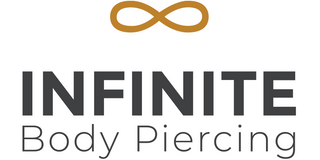Surface anchors (sometimes called microdermals or dermals) are a relatively recent invention. Based on a miniaturized transdermal implant, the first prototypes were introduced at the 2006 Association of Professional Piercers Conference and Exposition. They quickly gained popularity (as evidenced by this article in The Point) and have been a staple of piercing studios ever since.
Surface anchors can be placed anywhere on the body, but not everywhere on the body is suited for healing an anchor. Anchors on hands and feet are pretty much impossible to heal, and arms and legs aren’t much better. Areas without a lot of movement—such as the torso—areas where clothes don’t rub, and certain areas on the face are best. If you’re trying to decide where you want an anchor, come in and talk to one of our piercers. They can help you with choosing what placement fits not only your anatomy but your lifestyle as well. (You can also check out surface anchor piercings in our gallery for a few examples.)
Surface anchors are also sometimes referred to as single point piercings, meaning that while they have an entry point they do not have an exit point—like traditional piercings. The jewelry is composed of two pieces: a threaded end for the top (i.e. the visible part of the piercing) and the base (the part under the skin). Our bases are manufactured from implant-grade titanium and consist of a threaded post attached to a flat “foot” that sits under the skin. Different lengths of posts, or “uplifts,” are used for different skin types and different areas of the body. The uplift should allow the end to sit as flush to the skin as possible while still allowing for any swelling during healing.
Healing is temperamental, at best. Even once an anchor is healed, flare-ups are common, so a regular regimen of salt-water soaks is crucial for the health of this piercing. For more information, check out our Surface Piercing and Anchor aftercare section.
Lastly, surface anchors do have a high incidence of rejection; so much so that we tell our clients to consider them as a temporary piercing. How long do they last? While there are people who have anchors five years or more—our counter staff call these piercings “unicorns” because of their rarity—the usual lifespan is anywhere from a few months to a few years, so be sure to keep that in mind before obtaining this piercing.
















